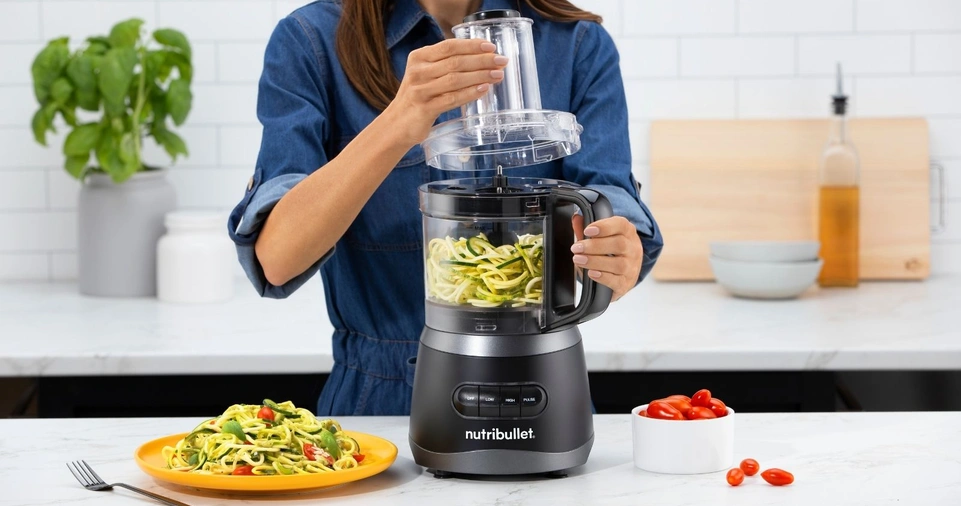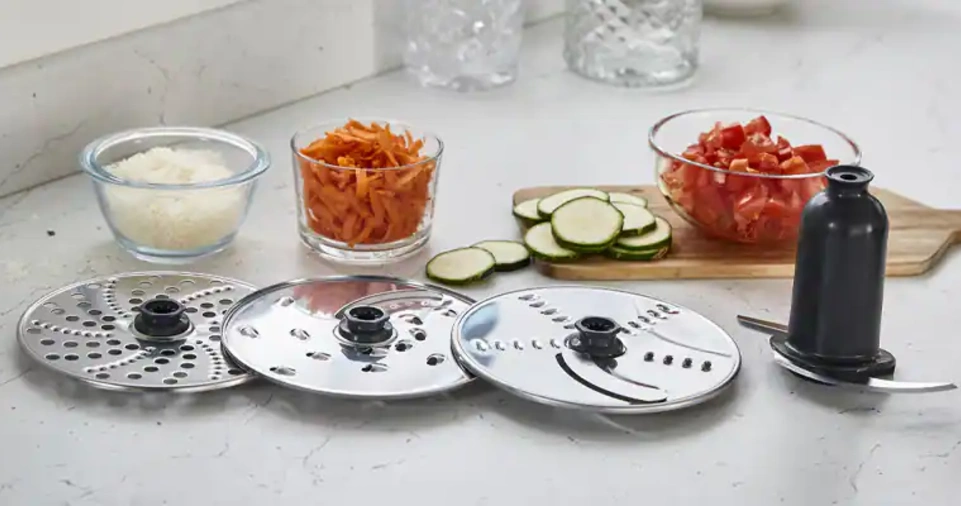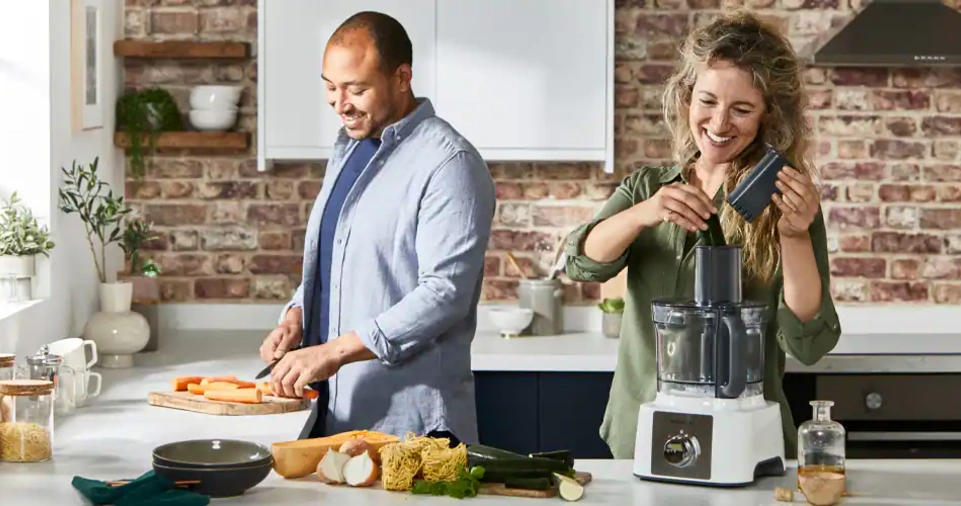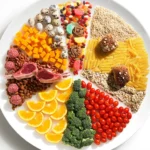A food processor is one of the most versatile and time-saving appliances you can have in your kitchen. Whether you’re chopping vegetables, making dough, or preparing a smooth puree, this powerful tool can streamline your cooking and elevate your meals.
This guide will walk you through everything you need to know about using a food processor for everyday meals, including practical tips, safety precautions, and creative recipe ideas.
Why Use a Food Processor?
A food processor can perform many kitchen tasks in a fraction of the time it takes to do them manually. Here are some benefits:
- Time-saving: Quickly chop, slice, shred, and puree ingredients.
- Consistency: Achieve uniform results with minimal effort.
- Versatility: Make everything from sauces and dips to doughs and desserts.
- Ease of use: Simple to operate with multiple settings and attachments.
Key Components of a Food Processor
Before you begin, it’s important to understand the basic parts of your food processor:
- Motor base: The heavy bottom part that powers the processor.
- Bowl: Comes in various sizes, typically with a locking lid.
- Feed tube and pusher: Allows you to add ingredients safely while the processor is running.
- Blades and discs: Includes chopping blades, slicing discs, shredding discs, and sometimes dough blades.
Getting Started: Basic Setup and Safety
Assembling Your Food Processor
- Place the bowl on the motor base and lock it into place.
- Attach the desired blade or disc.
- Lock the lid securely.
- Plug in the appliance and select the appropriate setting.
Safety Tips
- Always use the pusher to feed ingredients, never your fingers.
- Do not operate the processor without the lid in place.
- Unplug the appliance before changing blades or cleaning.
Everyday Tasks You Can Do With a Food Processor

Chopping Vegetables
Use the standard chopping blade to quickly dice onions, garlic, carrots, and more. Pulse for rough chops or let it run for finer pieces.
Shredding Cheese or Vegetables
Attach the shredding disc to shred hard cheese, cabbage, or carrots in seconds. Ideal for salads and toppings.
Slicing Fruits and Vegetables
Use the slicing disc for cucumbers, zucchini, potatoes, and more. Great for making uniform slices for casseroles or salads.
Making Dough
The dough blade makes mixing and kneading pizza, bread, or pastry dough easy. Follow the recipe instructions carefully.
Pureeing and Blending
Make soups, baby food, hummus, or nut butter by using the standard chopping blade until smooth.
Grinding Meat
With a sharp blade and a few pulses, you can grind your own meat for burgers, meatballs, or sausage.
Mixing Sauces and Dips
Prepare pesto, mayonnaise, salsa, or guacamole quickly and efficiently.
Making Crumbs
Turn stale bread into breadcrumbs or grind nuts into a coarse or fine meal.
Tips for Best Results
- Don’t overfill: Work in batches if needed to avoid uneven processing.
- Use cold ingredients: Especially helpful for dough and butter-based recipes.
- Pulse function: Helps control the texture and prevents over-processing.
- Pre-cut large items: Cut large vegetables or fruits into smaller pieces before processing.
Cleaning and Maintenance
- Disassemble all parts after use.
- Wash removable parts with warm, soapy water or in the dishwasher (check manufacturer guidelines).
- Wipe the motor base with a damp cloth.
- Store blades carefully to avoid injury.
Creative Recipe Ideas Using a Food Processor
Breakfast Ideas
- Smoothie Bowls: Blend frozen fruit and yogurt.
- Oat Flour: Grind oats for gluten-free flour.
- Breakfast Bars: Mix nuts, seeds, and dried fruit.
Lunch Recipes
- Veggie Patties: Pulse beans, vegetables, and spices.
- Chicken Salad: Chop chicken and mix with celery and mayo.
- Coleslaw: Shred cabbage and carrots with ease.
Dinner Options
- Pasta Sauce: Blend tomatoes, garlic, and herbs.
- Cauliflower Rice: Pulse cauliflower florets.
- Meatballs: Mix ground meat, herbs, and breadcrumbs.
Snacks and Appetizers
- Hummus: Blend chickpeas, tahini, garlic, and lemon juice.
- Salsa: Pulse tomatoes, onions, and cilantro.
- Cheese Balls: Mix cream cheese, shredded cheese, and seasonings.
Desserts
- Pie Crust: Make dough using the pulse function.
- Energy Balls: Combine dates, cocoa powder, and nuts.
- Frozen Desserts: Puree frozen fruit for a healthy treat.
Common Mistakes to Avoid
- Overprocessing: Leads to mushy or inconsistent texture.
- Using wrong blade: Always check the instruction manual.
- Ignoring capacity limits: Can cause spills and strain the motor.
- Processing hot ingredients: Let them cool to avoid damage.
Table: Food Processor Blades and Their Uses

| Blade/Disc Type | Primary Use | Examples |
|---|---|---|
| Chopping Blade | Chopping, pureeing, blending | Onions, hummus, sauces |
| Slicing Disc | Slicing fruits and vegetables | Cucumbers, zucchini, potatoes |
| Shredding Disc | Shredding cheese and firm vegetables | Cheese, cabbage, carrots |
| Dough Blade | Mixing and kneading dough | Bread, pizza dough |
| Julienne Disc | Cutting vegetables into thin strips | Carrots, bell peppers |
Table: Sample Weekly Meal Prep with a Food Processor
| Day | Meal | Food Processor Task |
|---|---|---|
| Monday | Chicken Wraps | Chop chicken and veggies |
| Tuesday | Pasta Night | Make tomato sauce |
| Wednesday | Veggie Burgers | Pulse beans and spices |
| Thursday | Stir Fry | Slice vegetables |
| Friday | Tacos | Shred cheese and lettuce |
| Saturday | Smoothie Bowls | Blend fruits and yogurt |
| Sunday | Pizza Night | Knead pizza dough |
Additional Topics Worth Exploring
Choosing the Right Food Processor
When buying a food processor, consider the motor power, bowl capacity, attachments, and ease of cleaning. A larger bowl and stronger motor are ideal for families or batch cooking.
Food Processor vs Blender: When to Use Each
While they overlap in some functions, food processors are better for chopping and kneading, whereas blenders excel at smoothies and liquid-based recipes.
Storing Prepped Ingredients
Use airtight containers to store chopped vegetables or prepared sauces. Label and date them to maintain freshness and reduce food waste.
Budget-Friendly Meal Planning
Use a food processor to prep in bulk, reduce food waste, and save on takeout. Prepping once a week can lead to healthier, budget-conscious meals.
Conclusion
A food processor can revolutionize the way you cook and prepare meals every day. From saving time to expanding your culinary creativity, this appliance is a must-have in any kitchen.
By understanding how to properly use and maintain it, you’ll unlock countless possibilities in your cooking routine. Whether you’re preparing simple snacks or complex meals, a food processor offers convenience, consistency, and confidence.
Start exploring its full potential today and transform your meal prep into an effortless, enjoyable experience.







